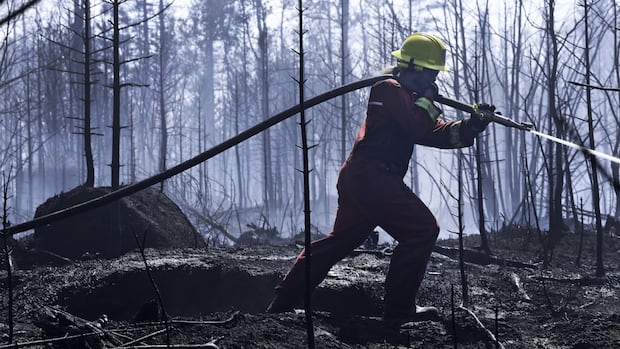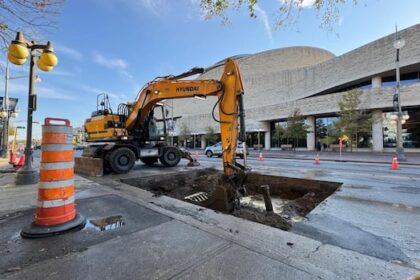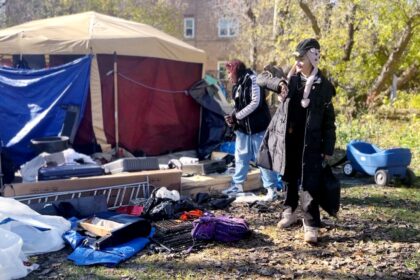Nova ScotiaThe effort to save homes from the Long Lake wildfire has been the largest in Nova Scotia’s history. Volunteer firefighters created a 10-kilometre water barrier to protect structures, as provincial staff focused on the flames.Effort to save homes in Annapolis County wildfire has been the largest in Nova Scotia’s historyCarolyn Ray · CBC News · Posted: Sep 04, 2025 4:09 PM EDT | Last Updated: 3 hours agoRebekah Deveau, of the Annapolis Royal volunteer fire department, sprays down a burnt-out area around a communications tower at the scene of the Long Lake fire near West Dalhousie, N.S. (Province of Nova Scotia)A Nova Scotia firefighter who led the effort to save homes in the path of the wildfire in Annapolis County says it’s amazing that anything in the area is left standing.Dave Rockwood, the provincial fire and ground search and rescue co-ordinator, has been fighting fires for 20 years. He was promoted to the leadership role just days before lightning sparked the Long Lake fire.Over his first three weeks on the job, he helped form the largest effort to save structures from fire in the province’s history.”I didn’t expect anything to be left,” he said of the conditions during the worst of the fire. “We were looking at 200-foot flames over ridge. Quite frankly, it’s amazing that the structures that are there are still there with the fire behaviour that we’ve seen.”When he arrived at the scene, Rockwood worked with the Bridgetown fire chief to come up with a plan to save the homes in the area. They brought in equipment from fire departments across the province, placing it across a 10-kilometre stretch.Firefighters built a line of water protection that stretched 10 kilometres to protect homes in the area. They rehydrated grass that was parched from the drought, and shot water into the air to create a humidity bubble. (Province of Nova Scotia)Volunteer firefighters went to homes, taking away anything that could fuel the flames. They moved patio equipment and propane tanks. Windows were shut.Some homes with water sources nearby were protected with fire sprinklers. But with the dry conditions, that wasn’t enough.Firefighters from the Department of Natural Resources focused on hitting the fire dead-on, buying the volunteers time to saturate the area around homes.”They’ve been going through absolute hell in the woods, there’s no other way to say it,” said Rockwood during a media briefing Thursday.”At one point, I had almost 50 apparatuses on site from volunteer fire departments that were able to shoot large amounts of water into the air, creating a humidity bubble around those structures that we couldn’t get water to.”Firefighters moved immense amounts of water from the nearby valley to refill ponds.”That there is anything left is just an absolute testament around the work that was put in by the volunteer firefighters in the community and the amazing work that was done in the woods by the DNR personnel,” said Rockwood.He said they tried a technique that he had learned of when fighting fires in Western Canada, where dead, dry gas is rehydrated, so the moisture steers the fire away.Jim Rudderham, the director of fleet and forest protection, said evacuating homes early on bought firefighters time to try these methods.”I’m sorry we had to test it, but we did and it worked out quite well,” he said.Of the 88 structures in the line of protection, they lost just three, said Rockwood.In all, the fire has consumed 20 homes and about a dozen other structures, primarily in areas that were deemed unsafe or far from water sources. It remains out of control, but Rudderham said the fall-like conditions in the area are forming dew on the ground, which is helping the effort.The fire covers nearly 85 square kilometres.While some people were allowed back in the area on Wednesday, some are still out of their homes, with no indication when they will be able to return.”It’s difficult at times to choke things back. It’s been a lot of emotions for three weeks now,” said Rockwood. “I feel for everybody that has lost.”ABOUT THE AUTHORCarolyn Ray is a videojournalist who has reported out of three provinces and two territories, and is now based in Halifax. You can reach her at Carolyn.Ray@cbc.ca
‘I didn’t expect anything to be left,’ says firefighter of Long Lake effort











